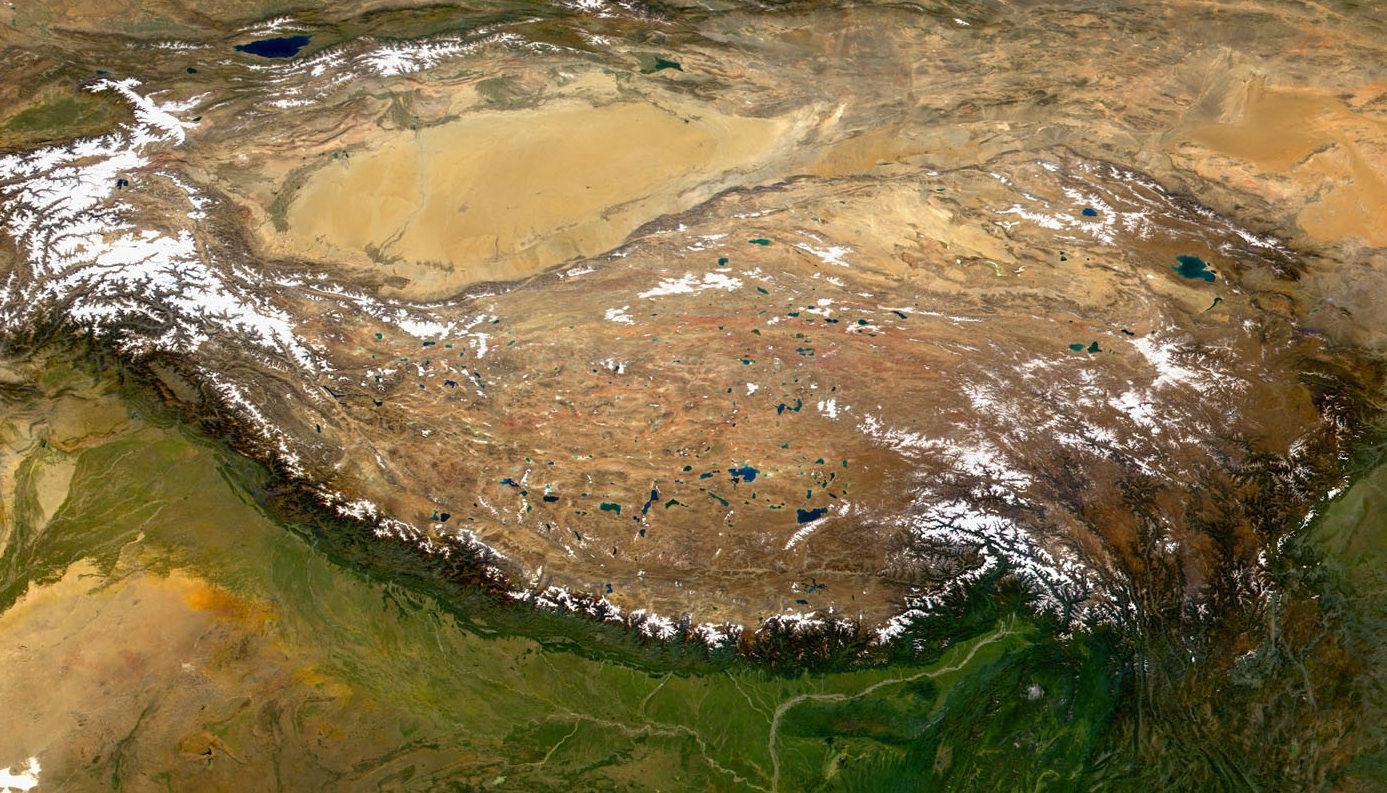Tibet’s history is ancient, complex, and politically sensitive. It spans thousands of years, with periods of independence, foreign influence, and integration with imperial China. Below is a detailed timeline and explanation of Tibet’s history, including its status in relation to China, Nepal, and India.
🕰️ Timeline of Tibet's History
| Period | Description | Status |
|---|---|---|
| Before 7th century CE | Indigenous Bon religion thrives; tribal confederacies exist across the plateau | Pre-state tribal society |
| c. 618–842 CE | Tibetan Empire: Founded by Songtsen Gampo; expanded into Central Asia, parts of Nepal, and China | Independent empire |
| 842–1247 CE | Post-empire fragmentation into regional kingdoms; Buddhism spreads | Politically fragmented, de facto independent |
| 1247–1354 | Mongol conquest; Tibet under Yuan Dynasty (Mongol Empire) suzerainty; Sakya lama governs under Mongol patronage | Under Mongol (Chinese Yuan) suzerainty |
| 1354–1642 | Rise of Phagmodrupa and later Tsangpa dynasties | Independent rule, minimal Chinese influence |
| 1642–1720 | Ganden Phodrang government under 5th Dalai Lama with help from Mongol allies (Güshi Khan) | Independent theocracy, Mongol protection |
| 1720–1911 | Qing dynasty sends Ambans (imperial residents); Tibet becomes Qing protectorate; some autonomy | Qing (Manchu China) suzerainty, semi-autonomous |
| 1911–1951 | Fall of Qing → Tibet expels Chinese officials; operates as a de facto independent state, maintains foreign relations (e.g., with Britain and India) | Independent (de facto) |
| 1950–1951 | PRC invades (Battle of Chamdo); 17-Point Agreement signed under pressure | Annexed by PRC (People's Republic of China) |
| 1959 | Tibetan uprising crushed; Dalai Lama flees to India | Under Chinese occupation, government-in-exile formed |
| 1965–present | Tibet Autonomous Region established under PRC; heavy repression, cultural control | Part of China, disputed status internationally |
📜 Key Phases Explained
🏯 1. Tibetan Empire (7th–9th Century)
-
Founder: Songtsen Gampo (618–649 CE)
-
Expanded west into Nepal, south into parts of India, and east into China.
-
Married Chinese (Tang) and Nepalese princesses; fostered early Buddhism.
-
Independence: Strong central empire; rival to Tang China.
⚔️ 2. Fragmentation & Mongol Era (9th–14th Century)
-
After collapse of empire (~842), Tibet fragmented into local kingdoms.
-
In 1247, Tibet submitted to Mongol rule, later incorporated into Yuan Dynasty (1271–1368).
-
Tibetan lamas held religious authority; Mongols respected Tibetan Buddhism.
🏔️ 3. Post-Mongol Local Rule (1354–1642)
-
Rise of indigenous Tibetan dynasties (Phagmodrupa, Rinpungpa, Tsangpa).
-
Tibet ruled itself without Chinese interference.
🛕 4. Theocracy Under the Dalai Lamas (1642–1720)
-
5th Dalai Lama, with Mongol military support, unifies Tibet under the Ganden Phodrang government.
-
Establishes Tibetan theocracy combining religion and politics.
🐉 5. Qing Dynasty Control (1720–1911)
-
Manchu Qing emperors assert control, station Ambans in Lhasa.
-
Chinese military interventions in 1720, 1792 (after Nepal-Tibet war).
-
However, Tibet retained substantial autonomy, especially in local affairs.
🚩 6. De Facto Independence (1911–1951)
-
Qing fall → Tibet expels Chinese officials and declares independence.
-
Tibet functions independently, has army, currency, and foreign diplomacy (though not widely recognized).
-
British India signs treaties with Tibet (Simla Convention, 1914).
🇨🇳 7. PRC Takeover (1950–present)
-
In 1950, PLA invades eastern Tibet.
-
In 1951, 17-Point Agreement (signed under duress) makes Tibet part of PRC.
-
1959 uprising leads to brutal crackdown; Dalai Lama flees to India.
-
Today, Tibet is administered as an Autonomous Region, but faces accusations of cultural genocide and repression.
🌏 Tibet's Relations with Nepal and India Over Time
🇳🇵 Tibet-Nepal Relations
-
Ancient ties: Nepalese princess Bhrikuti married Songtsen Gampo; Nepal helped introduce Buddhism to Tibet.
-
Trade & Religion: Close economic ties; Nepalese merchants active in Lhasa; cross-border monasteries.
-
Wars: 18th-century wars between Tibet and Nepal led to Chinese Qing intervention (1792).
-
Post-1950s: Nepal initially hosted Tibetan refugees but increasingly came under Chinese pressure to limit Tibetan activism.
🇮🇳 Tibet-India Relations
-
Spiritual bond: Tibetans revered India as the land of the Buddha; major pilgrimages to Bodh Gaya.
-
British India: British intervened in Tibet (Younghusband Expedition, 1904), later negotiated border treaties.
-
Post-independence:
-
India initially accepted Tibet's de facto autonomy.
-
After PRC takeover, India hosted Dalai Lama and 100,000+ refugees.
-
1962 Sino-Indian War partly triggered by China’s occupation of Tibet and disputed borders.
-
India continues to host the Tibetan government-in-exile in Dharamshala.
-
📌 Summary: Tibet’s Historical Status
| Period | Status |
|---|---|
| 7th–9th century | Independent Empire |
| 1247–1354 | Mongol (Yuan Dynasty) suzerainty |
| 1354–1642 | Independent local rule |
| 1642–1720 | Independent theocracy (with Mongol alliance) |
| 1720–1911 | Qing suzerainty (semi-autonomous) |
| 1911–1951 | De facto independence |
| 1951–present | Under PRC control (internationally disputed) |
🧭 Contemporary Context
-
The Central Tibetan Administration (government-in-exile) seeks genuine autonomy, not independence, under the Middle Way Approach.
-
Tibet remains a sensitive geopolitical flashpoint between China and India.
-
Its history is cited by supporters of Tibetan autonomy and Chinese nationalists alike to justify competing narratives.


No comments:
Post a Comment